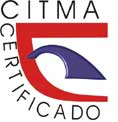Assessing the models of geo-technological variables in a block of a Cuban lateritic ore body: First part: kriging and inverse of 2D distance
Keywords:
lateritic ore body, kriging, inverse of distance.Abstract
The efficacy and the efficiency of mining and metallurgical operations that are carried out in lateritic ore bodies depend on various factors. An adequate modeling of the technological variables such as crust thickness and concentrations of the chemical elements that are of interest for the metallurgical process stands out among these factors. A great number of mathematical models are available in specialized materials and software. These models are capable of estimating the values of these variables in the desired geometrical locations based on the data obtained through sampling. To guarantee that these estimates are accurate it is required to evaluate their behavior in real situations. This work proves how effective Kringing and the Inverse of Distance can be when estimating, in locations of the plane, the crust thickness (L) and the concentrations of Nickel (N); iron (Fe) and cobalt (Co) in a block of a Cuban lateritic ore body.Downloads
References
BABAK, O & DEUTSCH, C. 2008: Statistical approach to inverse distance interpolation. Stochastic Environmental Research and Risk Assessment 23(5): 543-553.
BARNETT, R. & DEUTSCH, C. 2012: Practical Implementation of Non-linear Transforms for Modeling Geometallurgical Variables. Quantitative Geology and Geostatistics 17 (Geostatistics Oslo 2012): 409-422.
BOUCHER, A. & DIMITRAKOPOULOS, R. 2009: Block Simulation of Multiple Correlated Variables. Mathematical Geosciences 41(2): 215-237
DAGBERT, M. 2014: Review of the Book Mineral Resource Estimation. Mario Rossi and Clayton Deutsch. Springer, Early, 332 p. In: Mathematical Geosciences 46(8): 1 029-1 034.
DE IACO, S. & MAGGIO, S. 2011: Validation Techniques for Geological Patterns Simulations Based on Variogram and Multiple-Point Statistics. Mathematical Geosciences 43(4): 483-500.
ERTEN, O.; MCANDREW, L.; KIZIL, M. S. & TOPAL, E. 2014: Incorporating fine-scale ground-penetrating radar data into the mapping of lateral variability of a laterite-type bauxite horizon. Mining Technology 124(1): 1-15.
GARCÍA-GUERRA, P. A. 1988: Geoestadística Operacional. Departamento Nacional de Producción Mineral, Ministerio de Minas y Energía, República Federativa de Brasil, 145 p.
GOLDEN SOFTWARE, INC. 2012: Surfer. Versión 11.0.642. Golden, Colorado, USA.
ILYAS, A. & KOIKE, K. 2012: Geostatistical Modeling of Ore Grade Distribution from Geomorphic Characterization in a Laterite Nickel Deposit. Natural Resource Research 21(2): 177-191.
JIN, G.; LIU, Y. & NIU, W. 2003: Comparison between Inverse Distance Weighting Method and Kriging. Journal of XI'AN Shiyou University 2003(3). Consultado: 18 enero 2015. Disponible en: http://epub.cnki.net/grid2008/docdown/docdownload.aspx?filename=JLGX200303017&dbcode=CJFD&year=2003&dflag=pdfdown
LEGRÁ-LOBAINA, A. A. & ATANES-BEATÓN, D. M. 2010: Variogramas adaptativos: un método práctico para aumentar la utilidad del error de estimación por kriging. Minería y Geología 26(4): 53-78.
LEGRÁ-LOBAINA, A. A. 1999: Metodología para el pronóstico, planificación y control integral de la minería en yacimientos lateríticos. Tesis doctoral. Instituto Superior Minero Metalúrgico. 187 p.
LÓPEZ, J. A.; ROSAS, C. F.; FERNÁNDEZ, J. B. & VANZELA, G. A. 2011: Risk quantification in grade-tonnage curves and resource categorization in a lateritic nickel deposit using geologically constrained joint conditional simulation. Journal of Mining Science 47(2): 166-177.
LOQUIN, K. & DUBOIS, D. 2010: Kriging with Ill-Known Variogram and Data. Proceedings of 4th International Conference, SUM 2010. Toulouse, France, September 27-29, p. 219-235. ISBN: 978-3-642-15951-0.
LY, S.; CHARLES, C. & DEGRE, A. 2011: Geostatistical interpolation of daily rainfall at catchment scale: the use of several variogram models in the Ourthe and Ambleve catchments, Belgium. Hydrology and Earth System Sciences 15(7): 2 259-2 274.
MACHADO, D. M.; MULLER, E. M. & COIMBRA, J. F. 2012: Plurigaussian Simulations Used to Analyze the Uncertainty in Resources Estimation from a Lateritic Nickel Deposit. Quantitative Geology and Geostatistics 17 (Geostatistics Oslo 2012): 445-453.
MARTÍNEZ-VARGAS, A. & PÉREZ-MELO, N. 2006: ¿Cuál es el mejor método para estimar variables en yacimientos lateríticos de níquel y cobalto? Minería y Geología 22(3): 1-21.
MARTÍNEZ-VARGAS, A. 2009: Inferencia del error en el volumen global de recursos minerales asociado al error local de estimación del contenido. Minería y Geología 25(4): 1-16.
MCILWAINE, R.; COX, S.; DOHERTY, R.; PALMER, S.; OFTERDINGER, U. & MCKINLEY, J. 2014: Comparison of methods used to calculate typical threshold values for potentially toxic elements in soil. Environmental Geochemistry and Health 36(5): 953-971.
ROMANO, E.; BALZANELLA, A. & VERDE, R. 2013: A Regionalization Method for Spatial Functional Data Based on Variogram Models: An Application on Environmental Data. In: Advanced in Theoretical and Applied Statistics (Part II), p. 99-108.
TERRERO-MATOS, E.; LEGRÁ-LOBAINA, A. A. & LAMORÚ, A. 2014: Método de inverso de la potencia de la distancia para estimar la velocidad del viento. Ingeniería Energética 25(3): 263-273.
ZHOU, Y.; CHENG, S. & ZHANG, M. 2010: Setting of variogram parameters in reservoir modeling. Journal of XI'AN Shiyou University 2010(5). Consultado: 10 enero 2015. Disponible en: http://epub.cnki.net/grid2008/docdown/docdownload.aspx?filename=XASY201005006&dbcode=CJFD&year=2010&dflag=pdfdown.
ZIMMERMAN, D.; PAVLIK, C.; RUGGLES, A. & ARMSTRONG, M. 1999: An Experimental Comparison of Ordinary and Universal Kriging and Inverse Distance Weighting. Mathematical Geology 31(4): 375-390.
Published
How to Cite
Issue
Section
- Authors retain copyright and guaranteeing the right magazine to be the first publication of the work as licensed under a Creative Commons Attribution-NonCommercial that allows others to share the work with an acknowledgment of the work's authorship and initial publication in this journal.
- Authors may establish separate supplemental agreements for the exclusive distribution version of the work published in the journal (eg, place it in an institutional repository or publish it in a book), with an acknowledgment of its initial publication in this journal.
- Authors are allowed and recommended to disseminate their work through the Internet (e.g., in institutional telematic archives or on their websites) before and during the submission process, which can produce interesting exchanges and increase citations of the published work. (See The effect of open access)










